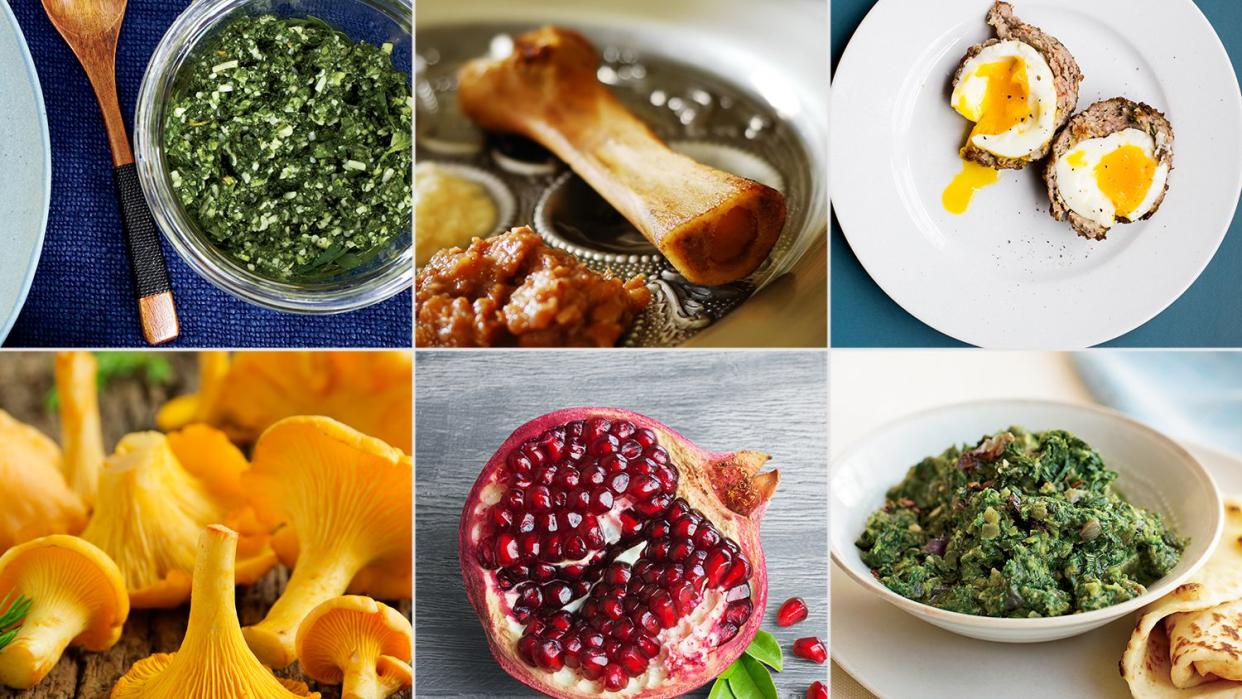How to Make the Best-Ever Seder Plate

© John Kernick / Blueenayim / David Malosh / Getty Images
Passover is a holiday that draws mixed reactions. Some people look forward to it as a time to see their families and embrace traditions passed down through generations. Others dread listening to elderly family members recite Hebrew for an extended period of time. What both camps can agree on, though, is that everyone looks forward to the Seder feast.
Seders have relied on many staples for the better part of hundreds, if not thousands, of years and it's time to upgrade some of the greatest hits found on the Seder plate. With that in mind, let's look at some simple changes to make this year's Passover the best ever.
Beitzah (A Hard-Boiled Egg)
The hard-boiled egg, known as beitzah on the Seder plate, reminds Seder attendees of the festival offering which was brought to the Holy Temple on Passover. Hard-boiled eggs are always a popular item at the Seder table, offering a necessary protein boost to keep you focused during the pre-meal service. However, hard-boiled eggs are also rather boring. Scotch eggs are a great alternative in this case—just make sure to substitute ground lamb, turkey or chicken for the pork that's traditionally used.
Maror (Bitter Herbs/Horseradish)
The maror (aka horseradish) is the spiciest component of the Seder table and symbolizes the harsh suffering and bitter times Jews endured when they were slaves in Egypt. Plain horseradish is a very agressive flavor and is not beloved by all. Rather than opt for plain horseradish this year, consider using it as a component of a light dish like Pickled Chanterelles with Horseradish. The initial burn of the root itself is softened by the additions of vineger, herbs and juniper berries.
Charoset (Wine + Apples + Nuts)
Without a doubt the most popular Seder plate item, charoset is a mixture of chopped apples, walnuts and red wine. It's supposed to resemble bricks and mortar, reminding the Jewish people how hard they were forced to work when they were slaves in Egypt. Bring some pomegranate flavor to your charoset with this Yemenite take on the Seder classic. You don't want to skip the greatest hits, but even fan favorites require an upgrade from time to time.
Karpas (Spring Greens)
Traditionally, karpas is a sprig of parsley, which you'll dip into salt water at the beginning of the Seder to remind yourself of the salty tears cried when Jews when were slaves in Egypt. There is nothing tasty about the karpas, but we can change that by parsley into pistou. It's is a great way get a fresh bite of spring: Spoon a scoop onto some matzo, sprinkle with sea salt and be happy that you're slowly, but surely, getting closer to the main course.
Chazeret (Romaine Lettuce)
The chazeret is is the second portion of bitter herbs eaten during the Seder, the F&W staff has debated its value fiercely. However, we all agreed that that romaine lettuce, the usual chazeret stand-in, is tremendously boring. Instead, opt for collards or mustard greens. They might not pair as well with charoset in the classic Seder sandwich (matzo + haroset + bitter herbs), but that's what the horseradish is for anyway.
Zeroah (Roasted Bone)
Traditionally represented by a lamb shank, the zeroah symbolizes the offering of sacrificial lambs that Jews once took to the original temple. As such, the bone is a classic and we see no reason to change it. Dayenu!
Matzo
Although matzo doesn't technically appear on the Seder plate, it is without a doubt the definitive Passover food. And everyone pretty much loathes it. What do to, other than turn it into matzo brei or matzo pizza? There are many artisanal matzos available today, but rather than splurge on such a thing, we suggest embracing your inner bubbe and baking your own matzo for a change. The best part? You can upgrade your homemade matzo with the one ingredient that the matzo of your childhood was most likely lacking: salt.

